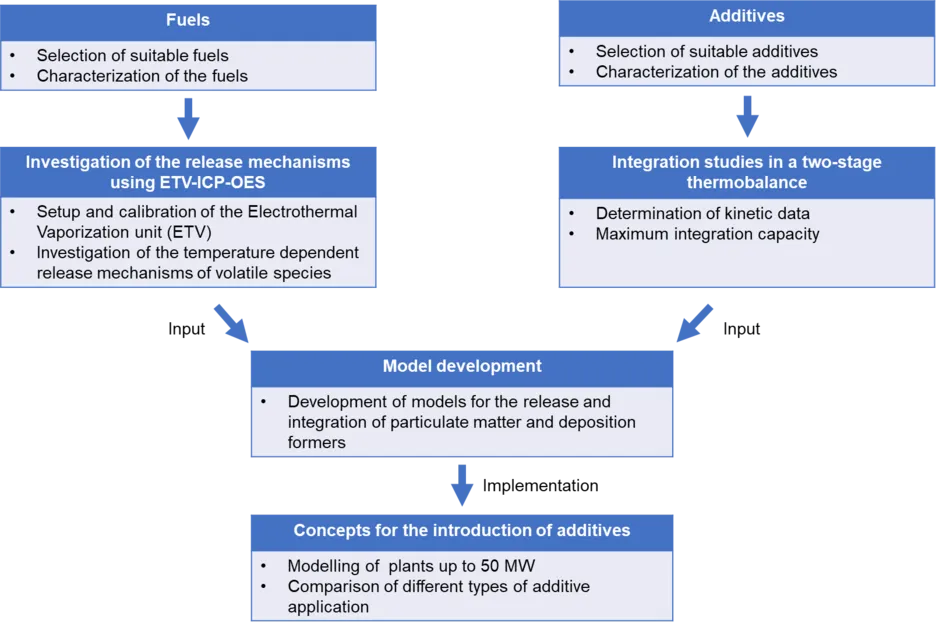BioAdd

BioAdd: Reduction of the Deposition Buildup and Fine Particle Emissions during the Combustion of Solid Biomasses using Additives
Motivation:
During the combustion of solid biomass, the release of deposition and fine particle forming compounds is a major problem. The effects of this release cause different difficulties in operating the plant, depending on the size of the plant. Small firing systems have legally prescribed limits for fine particle emissions apply; these limits are complied with difficulty, if even possible, when solid biomass is burned. In larger combustion plants, the formation of deposits on heat exchanger surfaces pose a great challenge. These depositions are highly corrosive and drastically reduce the durability and efficiency of heat exchangers and other components. Both, the formation of fine particles and the deposition buildup, are caused by the release of trace substances during combustion. By inserting additives to the furnace, the concentration of these deposition and fine particle formers in the flue gas can be reduced to run a more efficient combustion process.
Targets:
Knowledge of the released particles and deposition formers from the fuel is indispensable for the design of any additive based reduction system. An optical emission spectrometer with inductively coupled plasma (ICP-OES) is available at the Chair of Energy Systems for the characterization of the release behavior of these trace substances from the fuel. Coupling with an electrothermal evaporation unit (ETV) allows a temperature-dependent analysis of the release mechanisms.
Additionally, a two-stage thermobalance developed at the Chair of Energy Systems is used to independently investigate the particulate matter and deposition formers into the additives. The decoupling of the release and integration investigations in this experimental approach is exceptional. The two-stage thermobalance allows the parameters of both processes to be adjusted independently. These findings and considerations can be applied to many different firing systems.

In a next step, the experimental data will be used for the development of a model to describe the release and integration of problematic particulate matter and deposition formers. The aim is to develop a concept for the introduction of additives, independent of fuel, additives, and type of combustion system.
Funding:
The project is funded by the Federal Ministry of Food and Agriculture (BMEL) under the grant number 2219NR023. The author is responsible for the content of this publication.
Contact:
Hendrik Mörtenkötter, Dr.-Ing. Sebastian Fendt